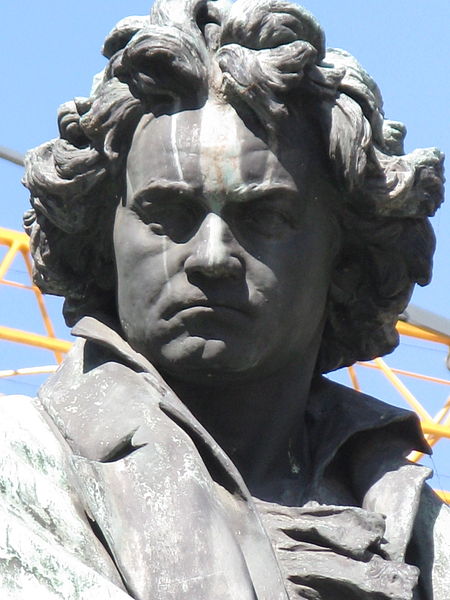Beethoven, Piano Sonata Op. 57 (Appassionata)

Photo: Yair-haklai (CC BY-SA 3.0)
Rip out the front page! I can take a hint, especially if it’s more or less a directive issued publicly. Professor Carol said in her last post that perhaps I might feature a middle-period Beethoven sonata as a Friday Performance Pick. I had other plans, but Beethoven it is.
Unfortunately I don’t see a video of Hinrich Alpers playing any of the sonatas Carol mentioned. He does, however, have a YouTube channel with other works that you might want to sample. And a general search of Alpers on YouTube will likely yield additional results.
The Appassionata ranks as one of the most famous and frequently performed of the 32 Beethoven piano sonatas. (As a side note, my sister gave me a shirt long ago with the opening bars of the Appassionata imprinted on it. Not everybody recognized it, of course, but many did.) It lives up to the name—full of passion, fury, and virtuosity. The name, however, was not given by Beethoven but assigned by the publisher after Beethoven’s death.
Beethoven brought in several innovations of form in this sonata. The typical sonata form consisted of an exposition (a theme 1 and a contrasting theme 2), which would be repeated. The exposition was then followed by a development section and a recapitulation. In this sonata, the second theme of the first movement is reminiscent of the first theme, more lyrical, but not clearly contrasting as would have been typical. It is an element of unity in an otherwise boisterous movement full of sudden surprises. Perhaps because of this, Beethoven omits the repeat of the exposition.
In the third and last movement (featured here), Beethoven continues to rearrange the form. Instead repeating the exposition, he repeats the development section and recapitulation. It has been suggested that this was Beethoven’s way of saying that the development of the thematic ideas (something Beethoven was famous for) was the most important element of the piece.



